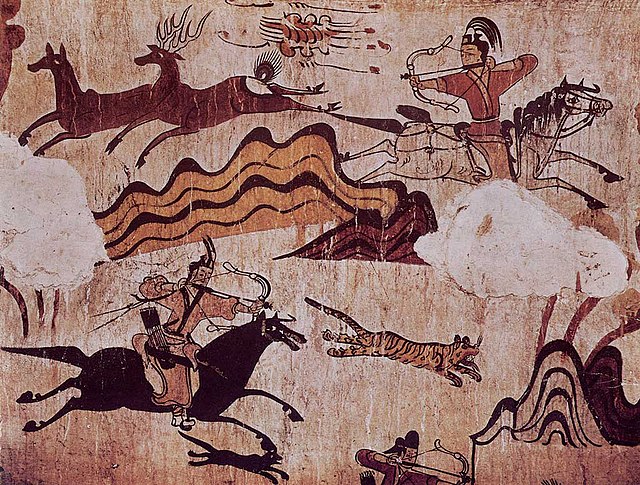The Korean Bow is a water buffalo horn-based composite reflex bow, standardized centuries ago from a variety of similar weapons in earlier use. Due to its long use by Koreans, it is also known as Guk Gung. The Korean bow utilizes a thumb draw and therefore employing the use of a thumb ring is quite common. The Korean thumb ring is somewhat different from the Manchu, Mongol, or the Turkic Thumb Ring, as it comes in two styles, male and female. Male thumb rings are shaped with a small protrusion that sticks out that the bowstring hooks behind, while the female thumb ring simply covers the front joint of the thumb as protection from getting blisters.
A Korean Bow (각궁, Gak-gung) that has not been strung
Korean Horse Back Archery in 5th-century.
Master Heon Kim.
A composite bow is a traditional bow made from horn, wood, and sinew laminated together, a form of laminated bow. The horn is on the belly, facing the archer, and sinew on the outer side of a wooden core. When the bow is drawn, the sinew and horn store more energy than wood for the same length of bow. The strength can be made similar to that of all-wood "self" bows, with similar draw-length and therefore a similar amount of energy delivered to the arrow from a much shorter bow. However, making a composite bow requires more varieties of material than a self bow, its construction takes much more time, and the finished bow is more sensitive to moisture.
Reconstruction of a Ming dynasty Kaiyuan horn, bamboo, and sinew composite bow by Chinese bowyer Gao Xiang
A Korean master archer using a modern Korean composite bow
Ramses II at the Battle of Kadesh
Ottoman horse archer






